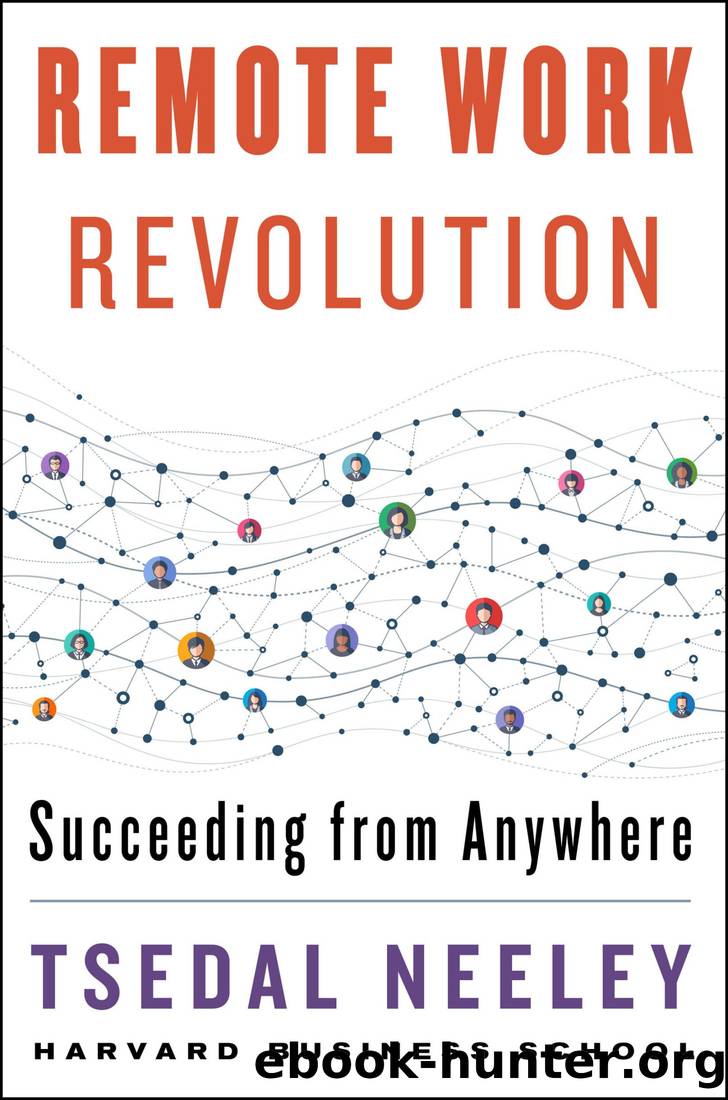Remote Work Revolution: Succeeding From Anywhere by Tsedal Neeley

Author:Tsedal Neeley [Neeley, Tsedal]
Language: eng
Format: epub
Tags: business, self help
ISBN: 9780063068322
Google: fa_sDwAAQBAJ
Amazon: 0063068303
Publisher: HarperCollins
Published: 2021-03-30T04:00:00+00:00
Set Digital Norms
Remote teams establish norms that identify which digital communication platforms are most appropriate for certain forms of correspondence. For example, email might be deemed most suitable for formal but non-urgent requests, while instant mobile messaging applications might be more appropriate for a less formal but more urgent request.
Phone calls can be used for quick check-ins. Even if office environments are set up to support team membersâ accessibility for quick one-on-one chats or huddles, not every collocated agile team works in such congenial architectural settings. Especially if people are shifted from team to team as projects demand, they may be located down the hall from one another. Decades ago, before mobile phones came on the scene, employees used a corporate desk phone to check in with a team member located two floors above or three floors down. Digital technology ushered in chat rooms and instant messaging for communicating about informal matters that did not necessitate a walk down the hall and a knock on a team memberâs cubicle for an informal check-in.
Working remotely, using oneâs personal mobile phone to call a team member becomes a replacement for the quick cubicle check-in, with the slower and more laborious texting again relegated to matters that require little to no back-and-forth discussion. Especially if working from home involves young children, and people are sitting in front of their computer screens wearing noise-cancelling headphones, itâs often easiest to make a quick, spontaneous call.
Because virtual communication can occur at any hour of the day or night, whereas face-to-face interaction at an office is bounded by more standardized work hours, managers need to establish guidelines on when to communicateâand more important, when not to communicateâin order to preserve the boundaries between work and nonwork responsibilities.
Download
This site does not store any files on its server. We only index and link to content provided by other sites. Please contact the content providers to delete copyright contents if any and email us, we'll remove relevant links or contents immediately.
Time Management Made Easy: How to Cultivate New Habits, Improve Productivity and Get Things Done by Joshua Strachan(2365)
The 7 Habits of Highly Effective People by Stephen R. Covey & Sean Covey(2098)
The Concise Laws of Human Nature by Robert Greene(1712)
Doesn't Hurt to Ask by Trey Gowdy(1555)
Primal Leadership by Daniel Goleman(1125)
Hook Point: How to Stand Out in a 3-Second World by Brendan Kane(1098)
HBR's 10 Must Reads 2021 by unknow(1044)
Don't Sweat the Small Stuff...and It's All Small Stuff by Richard Carlson(1012)
Amazon Unbound by Brad Stone(979)
100 Things Successful People Do by Nigel Cumberland(963)
HBR's 10 Must Reads 2021 by Harvard Business Review(955)
The Job Closer by Steve Dalton(937)
Master of One by Jordan Raynor(934)
Lives of the Stoics by Ryan Holiday & Stephen Hanselman(899)
Declutter Your Mind: A step by step guide to learn to control your thoughts, stop worrying, relieve anxiety and eliminate panic attacks and negative thinking by Mia Chandler(875)
The Power of 100! by Shaun King(843)
Conflicted by Ian Leslie(798)
Coders at Work: Reflections on the craft of programming by Peter Seibel(787)
The Book of Hope by Jane Goodall(743)
